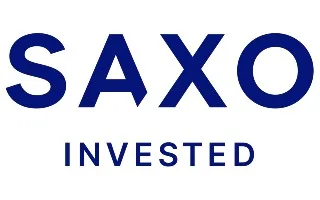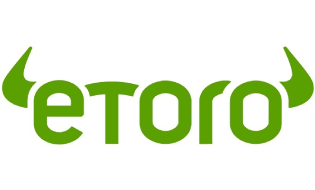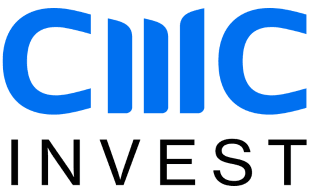A$31.82
How to buy shares in Woolworths
To buy shares listed in Australia such as Woolworths, you'll need to sign up to a broker with access to the ASX. Our table can help you compare share trading platforms and choose. Then follow these steps.
-
Open and fund your brokerage account. Complete an application with your personal and financial details, including your ID and tax file number. Fund your account with a bank transfer, PayPal or debit card.
-
Search for Woolworths. Find the share by name or ticker symbol: WOW. Research its history to confirm it's a solid investment against your financial goals.
-
Purchase now or later. Buy today with a market order or use a limit order to delay your purchase until Woolworths reaches your desired price. Look into dollar-cost averaging to spread out your risk, which smooths out buying at consistent intervals and amounts.
-
Decide on how many to buy. At today's price, weigh your budget against a diversified portfolio that can minimise risk through the market's ups and downs.
-
Check on your investment. Congratulations, you own a part of Woolworths. Optimise your portfolio by tracking how your stock and the business performs with an eye on the long term. You may be eligible for dividends and shareholder voting rights on directors and management that affect your stock.
Our top pick for
Best for beginner

Our top pick for
Education & learning

Our top pick for
Australian stocks

Woolworths stock price (ASX:WOW)
Use our graph to track the performance of WOW stocks over time.Woolworths shares at a glance
| 52-week range | $30.12 - $39.186 |
|---|---|
| 50-day moving average | $32.0212 |
| 200-day moving average | $35.2032 |
| Target price | $34.42 |
| PE ratio | 3185 |
| Dividend yield | $1.05 (3%) |
| Earnings per share (TTM) | $0.01 |
Compare share trading platforms
Is it a good time to buy Woolworths stock?
The technical analysis gauge below displays real-time ratings for the timeframes you select. However, this is not a recommendation. It represents a technical analysis based on the most popular technical indicators: Moving Averages, Oscillators and Pivots. Finder might not concur and takes no responsibility.
Woolworths price performance over time
Historical closes compared with the last close of A$31.65
| 1 week (2024-05-10) | |
|---|---|
| 1 month (2024-04-18) | |
| 3 months (2024-02-16) | |
| 6 months (2023-11-17) |
| 1 year (2023-05-18) | |
|---|---|
| 2 years (2022-05-18) | |
| 3 years (2021-05-18) | |
| 5 years (2019-05-17) |
Is Woolworths under- or over-valued?
Valuing Woolworths stock is incredibly difficult, and any metric has to be viewed as part of a bigger picture of Woolworths's overall performance. However, analysts commonly use some key metrics to help gauge the value of a stock.
Woolworths's P/E ratio
Woolworths's current share price divided by its per-share earnings (EPS) over a 12-month period gives a "trailing price/earnings ratio" of roughly 3185x. In other words, Woolworths shares trade at around 3185x recent earnings.
That's relatively high compared to, say, the P/E ratio for the ASX over the 12 months to December 2019 (32.14). The high P/E ratio could mean that investors are optimistic about the outlook for the shares or simply that they're over-valued.
Woolworths's PEG ratio
Woolworths's "price/earnings-to-growth ratio" can be calculated by dividing its P/E ratio by its growth – to give 2.37. A low ratio can be interpreted as meaning the shares offer better value, while a higher ratio can be interpreted as meaning the shares offer worse value.
The PEG ratio provides a broader view than just the P/E ratio, as it gives more insight into Woolworths's future profitability. By accounting for growth, it could also help you if you're comparing the share prices of multiple high-growth companies.
Woolworths's EBITDA
Woolworths's EBITDA (earnings before interest, taxes, depreciation and amortisation) is $2.5 billion (£1.3 billion).
The EBITDA is a measure of a Woolworths's overall financial performance and is widely used to measure stock profitability.
Woolworths financials
| Revenue TTM | $65.8 billion |
|---|---|
| Gross profit TTM | $17.2 billion |
| Return on assets TTM | 2.54% |
| Return on equity TTM | 0.12% |
| Profit margin | -0.01% |
| Book value | 4.174 |
| Market capitalisation | $38.9 billion |
TTM: trailing 12 months
Woolworths's environmental, social and governance track record
Environmental, social and governance (known as ESG) criteria are a set of three factors used to measure the sustainability and social impact of companies like Woolworths.
When it comes to ESG scores, lower is better, and lower scores are generally associated with lower risk for would-be investors.
Woolworths's total ESG risk score
Total ESG risk: 22.41
Socially conscious investors use ESG scores to screen how an investment aligns with their worldview, and Woolworths's overall score of 22.41 (as at 12/31/2018) is pretty good – landing it in it in the 24th percentile of companies rated in the same sector.
ESG scores are increasingly used to estimate the level of risk a company like Woolworths is exposed to within the areas of "environmental" (carbon footprint, resource use etc.), "social" (health and safety, human rights etc.), and "governance" (anti-corruption, tax transparency etc.).
Woolworths's environmental score
Environmental score: 5.93/100
Woolworths's environmental score of 5.93 puts it squarely in the 2nd percentile of companies rated in the same sector. This could suggest that Woolworths is a leader in its sector terms of its environmental impact, and exposed to a lower level of risk.
Woolworths's social score
Social score: 11.44/100
Woolworths's social score of 11.44 puts it squarely in the 2nd percentile of companies rated in the same sector. This could suggest that Woolworths is a leader in its sector when it comes to taking good care of its workforce and the communities it impacts.
Woolworths's governance score
Governance score: 4.04/100
Woolworths's governance score puts it squarely in the 2nd percentile of companies rated in the same sector. That could suggest that Woolworths is a leader in its sector when it comes to responsible management and strategy, and exposed to a lower level of risk.
Woolworths's controversy score
Controversy score: 3/5
ESG scores also evaluate any incidences of controversy that a company has been involved in. Woolworths scored a 3 out of 5 for controversy – a middle-of-the-table result reflecting that Woolworths hasn't always managed to keep its nose clean.
Environmental, social, and governance (ESG) summary
Woolworths Ltd was last rated for ESG on: 2019-01-01.
| Total ESG score | 22.41 |
|---|---|
| Total ESG percentile | 24.44 |
| Environmental score | 5.93 |
| Environmental score percentile | 2 |
| Social score | 11.44 |
| Social score percentile | 2 |
| Governance score | 4.04 |
| Governance score percentile | 2 |
| Level of controversy | 3 |
Woolworths share dividends
Dividend payout ratio: 1.75% of net profits
Recently Woolworths has paid out, on average, around 1.75% of net profits as dividends. That has enabled analysts to estimate a "forward annual dividend yield" of 3% of the current stock value. This means that over a year, based on recent payouts (which are sadly no guarantee of future payouts), Woolworths shareholders could enjoy a 3% return on their shares, in the form of dividend payments. In Woolworths's case, that would currently equate to about A$1.05 per share.
While Woolworths's payout ratio might seem low, this can signify that Woolworths is investing more in its future growth.
The latest dividend was paid out to all shareholders who bought their shares by 27 February 2024 (the "ex-dividend date").
Have Woolworths's shares ever split?
Woolworths's shares were split on 16 February 2000.
Woolworths share price volatility
Over the last 12 months, Woolworths's shares have ranged in value from as little as $30.12 up to $39.186. A popular way to gauge a stock's volatility is its "beta".
Beta measures a share's volatility in relation to the market. The market (AU average) beta is 1, while Woolworths's is 0.274. This would suggest that Woolworths's shares are less volatile than average (for this exchange).
Woolworths overview
Woolworths Group Limited operates retail stores in Australia and New Zealand. It operates through Australian Food, Australian B2B, New Zealand Food, BIG W, and Other segments. The Australian Food segment procures and resells food and related products, and provides services to customers in Australia. The Australian B2B segment engages in procurement and distribution of food and related products for resale to other businesses, as well as provision of supply chain services to business customers in Australia. The New Zealand Food segment is involved in the procurement and resale of food and drinks, and provides services to retail customers in New Zealand. BIG W segment procures and resells discount general merchandise products to customers in Australia. The Other segment operates Quantium and MyDeal retail stores The company was formerly known as Woolworths Limited and changed its name to Woolworths Group Limited in December 2017. Woolworths Group Limited was incorporated in 1924 and is based in Bella Vista, Australia.
Stocks similar to Woolworths
AMP Ltd Preferred

AUD104.31
ANZ Group Holdings Ltd. Pfd.

AUD101.63
ANZ Group Holdings Ltd. Pfd.

AUD103.32
Challenger Ltd Preferred

AUD102.70
Macquarie Bank Ltd Pref

AUD106.14
Macquarie Group Ltd Pref

AUD106.70
Macquarie Group Preferred

AUD103.81
Suncorp Group Ltd Pref

AUD100.24
Westpac Banking Corp Pref

AUD103.60
Woolworths in the news

Woolworths Group's (ASX:WOW) Dividend Will Be A$0.47

Do These 3 Checks Before Buying Woolworths Group Limited (ASX:WOW) For Its Upcoming Dividend

Analysts Have Made A Financial Statement On Woolworths Group Limited's (ASX:WOW) Interim Report
Frequently asked questions
More guides on Finder
-
Spaceship US Investing review
Explore Spaceship's US Investing service: low entry cost with a focus, but limited trading options.
-
HALO Trading review for Australians
Explore our comprehensive review of HALO Trading's features and fees for Australian traders.
-
The best penny stocks on the ASX in 2024 (updated monthly)
We used a proprietary algorithm to find the a list of ASX penny stocks that should be on your watchlist in 2024.
-
Best performing stocks on the ASX in 2024 (Updated weekly)
Looking for the best performing stocks in Australia? We update this list weekly.
-
Marketech share trading review
We discuss the pros, cons, fees, features and other information about the online trading platform Marketech.
-
How to sell shares in Australia
Here's all the key information you need to know to sell shares you inherited or received as a gift.
-
How to buy Gol Linhas Aereas Inteligentes SA ADR (GOL) shares in Australia
Steps to owning and managing Gol Linhas Aéreas Inteligentes SA shares from Australia.
-
GO Markets review: A trading platform for stocks, forex and CFDs
GO Markets offers a comprehensive package to both share investors and experienced CFD traders.
-
Where and how to invest $1,000 in Australia
$1,000 is a great place to start investing – these are your options.
-
Bank of Melbourne directshares Online Broking
The Finder review of the Bank of Melbourne directshares Online Broking platform.
Ask a Question
A friend who holds some Woolworth shares told me that as a shareholder he receives a 10% discount on monthly purchases. Is this true?
Hi Razer, I admit I raced to check this out for myself. But unfortunately, this is not the case. See: https://www.woolworthsgroup.com.au/au/en/investors/shareholding-information/shareholder-faqs.html#accordion-4207c57092-item-2cbadfdbab